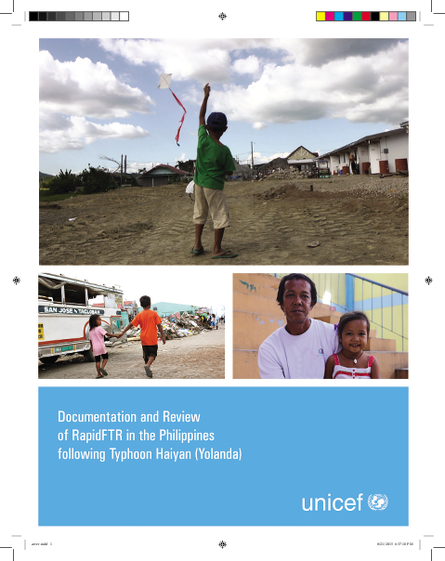
Typhoon Haiyan (Yolanda) hit the Philippines on 8 November 2013 affecting 16 million people, causing some 6,300 deaths, displacing 4.1 million people and damaging or destroying 1.1 million houses. Early reports indicated there were significant numbers of unaccompanied and separated children (UASC). Such children are particularly at risk of violence, exploitation, abuse and trafficking. National police records show that the provinces of Leyte and Eastern Samar and other areas, which were badly affected by the typhoon, are known hot spots for the trafficking of women and children and other forms of gender-based violence. There was thus a real potential for unaccompanied children to leave their affected areas through a number of unpatrolled exit routes.
Actions to prevent further separations and respond to unaccompanied and separated children are a priority in all emergencies. The decision to implement Rapid Family Tracing and Reunification (RapidFTR) in selected municipalities of the affected areas was taken in view of UNICEF’s commitment to prevent and address family separation and global experience in this effort. Experience shows that many children – particularly those recently and accidentally separated – can be rapidly reunited, and further separations can be prevented if urgent action is taken. RapidFTR was originally designed for this kind of rapid-onset emergency; however, it had only been used in refugee situations before Typhoon Haiyan. RapidFTR was deemed an appropriate tool and Haiyan allowed it the first opportunity to be piloted in such a situation.
In the last quarter of 2014, it was decided that a documentation and review of the deployment and implementation of RapidFTR as part of the Haiyan emergency response is recommended in order to explore the potential for continued use of RapidFTR in future emergencies, including as part of Disaster Risk Reduction (DRR). The documentation will include a systematic review of RapidFTR implementation in the Typhoon Haiyan (Yolanda) emergency, thus ensuring the most appropriate application of RapidFTR in the future .
